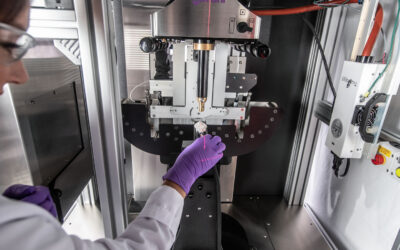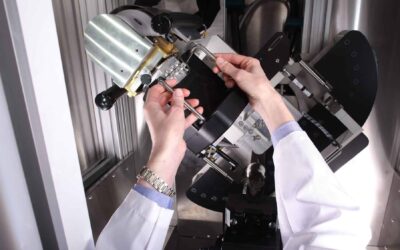Classical descriptions of tumor physiology suggest two origins for tumor hypoxia; steady-state (diffusion-limited) hypoxia and cycling (perfusionmodulated) hypoxia. Both origins, primarily studied and characterized in murine models, predict relatively small, isolated foci or thin shells of hypoxic tissue interspersed with contrasting oxic tissue. These foci or shells would not be expected to scale with overall tumor size since the oxygen diffusion distance (determined by oxygen permeability and tissue oxygen consumption rate) is not known to vary dramatically from tumor to tumor. We have identified much larger (macroscopic) regions of hypoxia in rat gliosarcoma tumors and in larger human tumors (notably sarcomas and high-grade glial tumors), as indicated by biochemical binding of the hypoxia marker, EF5. Thus, we considered an alternative cause of tumor hypoxia related to a phenomenon first observed in window-chamber tumor models: namely longitudinal arteriole gradients. Although longitudinal arteriole gradients, as originally described, are also microscopic in nature, it is possible for them to scale with tumor size if tumor blood flow is organized in an appropriate manner. In this organization, inflowing blood would arise from relatively well-oxygenated sources and would branch and then coalesce to poorly-oxygenated outflowing blood over distances much larger than the length of conventional arterioles (multi-millimeter scale). This novel concept differs from the common characterization of tumor blood flow as disorganized and/or chaotic. The organization of blood flow to produce extended longitudinal gradients and macroscopic regional hypoxia has many important implications for the imaging, therapy and biological properties of tumors. Herein, we report the first experimental evidence for such blood flow, using rat 9L gliosarcoma tumors grown on the epigastric artery/vein pair.
Cameron J. Koch / W. Timothy Jenkins / Kevin W. Jenkins / Xiang Yang Yang / A. Lee Shuman / Stephen Pickup / Caitlyn R. Riehl / Ramesh Paudyal / Harish Poptani / Sydney M. Evans
Download Paper
Xstrahl to Highlight Superficial and Orthovoltage Radiotherapy Solutions for Skin Cancer and Selective Benign Conditions at AAPM 2024
Xstrahl, a global leader in the delivery of superficial radiation therapy devices and preclinical radiation research systems, will demonstrate Xstrahl 200, a modern orthovoltage radiotherapy solution for treating superficial lesions, skin cancers, and selective benign conditions at the 66th Annual Meeting & Exhibition of the American Association of Physicists in Medicine (AAPM) in Los Angeles, CA, from July 21-25, 2024, at booth 518.






